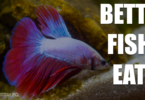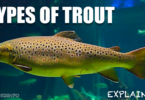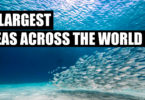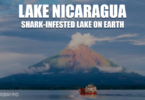The beautiful Hawksbill Turtle, also known by its scientific name Eretmochelys imbricata, is an underwater creature that inhabits warm, tropical waters all over the world. Although these turtles have adorned our waters for millions of years, they are currently in danger of being extinct. Hawksbill turtles are classified as severely endangered by the IUCN, and their numbers are rapidly dropping. This article will examine in depth, the various factors that threaten hawksbill turtles and necessary conservation efforts to save these exotic creatures.
Why Are Hawksbill Turtles Endangered?
These ancient reptiles, with their distinctive beak-like jaws, stunning shell patterns, and graceful underwater movements, have captured the imagination of people for centuries. However, there are various reasons which contribute to the rapid decline of their population in their population, such as:
1: Habitat Loss and Degradation
One of the main reasons hawksbill turtles are endangered is the degradation and destruction of their natural habitats. Hawksbills inhabit mainly coral reefs, rocky shores, and shallow coastal waters because these areas provide food sources and nesting sites.
However, coastal development, pollution, and climate change have reduced these habitats. Additionally, pollution from agricultural runoff, industrial sludge, and plastic waste is contaminating the water and coral reefs where these turtles feed, causing harm to their health and reducing their prey availability.
2: Slow Reproduction Rates
Hawksbill turtles reproduce slowly, making their populations more likely to decline. Female turtles mature at around 20 to 30 years and lay a small number of eggs around 100 to 150. The combination of slow growth, low yields, and high nest predation rates causes their population to decline. Even if conservation efforts have been made, it can take decades for their numbers to recover.
3: Illegal Wildlife Trade
The illegal wildlife trade poses a serious threat to hawksbill turtles. These turtles are targeted for their patterned shells, which are sought after for use in accessories and jewelry, leading to widespread hawksbill turtle poaching and smuggling.
4: Overexploitation
The overexploitation of hawksbill turtles and their eggs has been going on for a long time. In many coastal areas, these turtles are overexploited for the meat, and their eggs are also collected for consumption or sale, further reducing hawksbill turtle populations. In addition, some aboriginal communities rely on hawksbill turtles as a source of income, complicating the planning and management of sustainable harvests.
5: Climate Change
A very serious threat to hawksbill turtles and their habitat is due to changes in climatic conditions constantly. Increasing ocean temperatures can affect the sex ratio of chicks, and higher temperatures produce more females. If there is a sex imbalance, it can reduce the reproductive potential of deer populations. Also, rising sea levels can flood nesting beaches, making it harder for turtles to lay their eggs.
6: Fisheries Bycatch
Hawksbill turtles are often the unintentional bycatch of commercial fisheries. These turtles can become entangled in fishing nets and be drowned or seriously injured. Gillnets, trawl nets, and longlines pose a particular threat to hawksbill turtles, as they migrate to the same areas where these fishing methods are used. Bycatch mortality adds further pressure to already fragile falcon populations.
7: Light Pollution
Light pollution on the coastline distracts hatchling turtles drags them away from the ocean and makes their way to dangerous areas. Baby turtles are instinctively attracted to the reflections of the stars and moons on the surface of the ocean, which guides them safely to the surface. Many times, artificial lights from buildings, streets, and resorts have distracted children, causing them to crawl in the wrong direction, where they will encounter predators and die from exhaustion or dehydration because it has become dirty.
Conclusion
Hawksbill turtles are an incredibly beautiful and ecologically important species, but they are facing the great threat of extinction due to habitat destruction, climate change, illegal trade, long-distance catches, and slow spawning.
Conservation, legislation, and public awareness campaigns are all central to the solution. Therefore, it is time to protect these ancient sailors and their habitat to see hawksbill turtles gracefully navigate the world’s oceans which they call home before it is too late.







